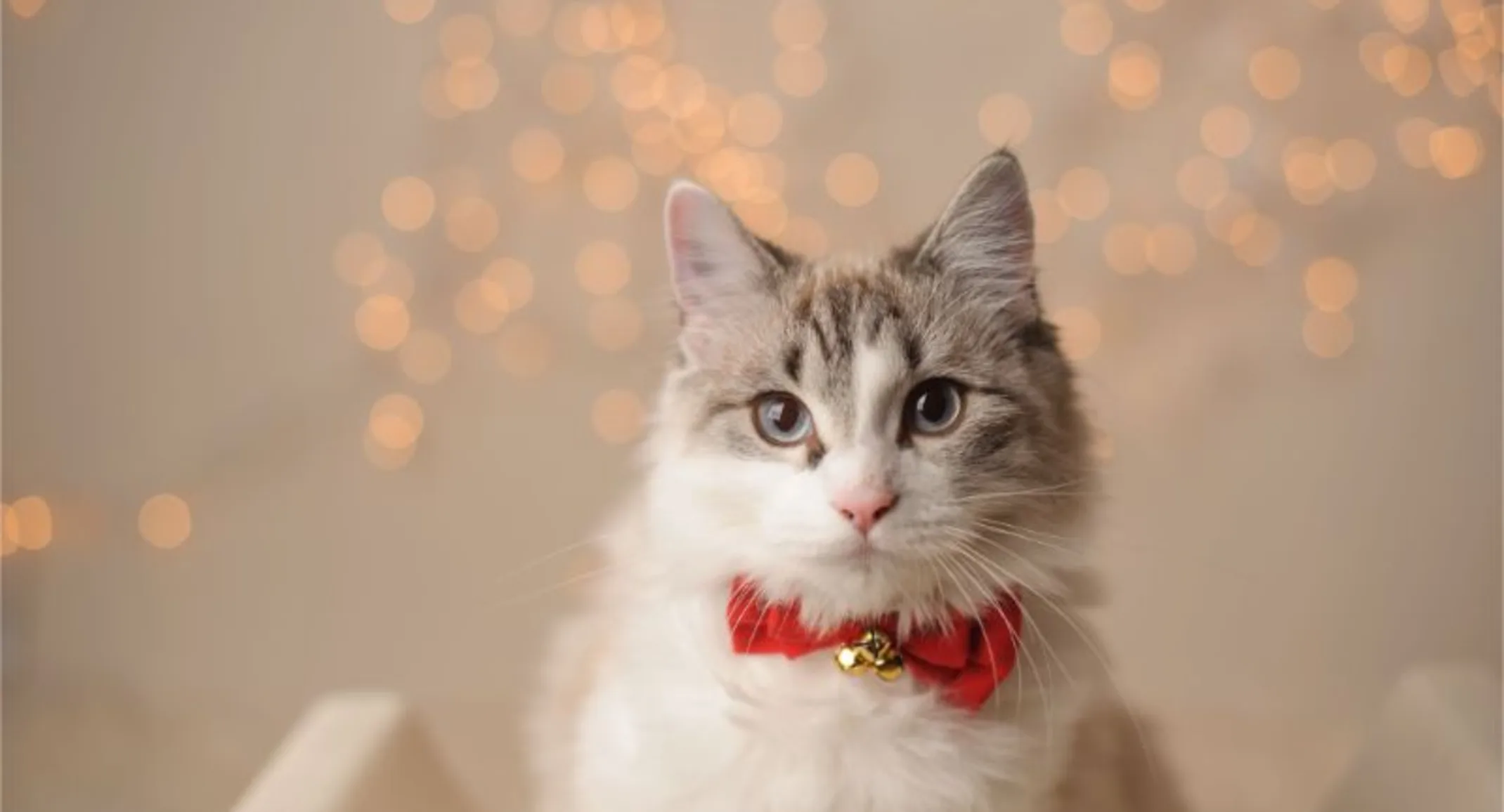December 2021 Newsletter: Pet Gifts
Newsletters

With the holidays rapidly approaching, many are wondering what gifts they should be considering for their furry family members. In this month’s newsletter, we share some ideas that your pet will truly appreciate.
Treats
Some pets will happily receive treats in lieu of toys this holiday season. To help ensure your pets do not overindulge, consider low calorie treats. If low calorie treats are difficult to locate or your pet does not enjoy them, break them into smaller portions to provide a greater number of tasty rewards for the same number of calories.
And if your pet receives a new brand or flavor of treats, start with just a few to ensure there are no adverse reactions — such as coughing or diarrhea. Avoid mixing treats as a combination can make it difficult to understand which treat, if any, might produce discomfort for your pet.
Don’t forget that less is definitely more, and not all foods are equal. Try to limit table scraps as they often possess higher levels of salt, fat, and calories than pet food — or even pet treats. And never give your pets: chocolate or foods with caffeine, grapes or raisins, nuts, milk and dairy items, garlic or onions, salty foods (including snacks) and any food containing artificial sweeteners — particularly Xylitol.
Toys
When shopping for toys, avoid items that could result in choking or other hazards. Choking can be caused by small, large, soft or sharp items that fall off, are chewed off or are pulled off from the exterior of a toy — or originate from within the toy as it is used. When selecting a toy, pull hard to ensure it does not have any components that can be chewed off, removed or swallowed — such as:
Glued-on buttons or plastic eyes
Loosely attached legs or tails
Any internal bells or squeakers
Product tags
Poorly sewn seams providing access to the interior of the toy
Ropes and strings
Swallowing toys or chewed-up components can lead to severe digestive issues that require immediate attention — including surgery. Intestinal obstructions can prevent food, fluids and gas from moving through the intestines which can cause parts of the intestine to die leading to serious and life-threatening situations.
Especially dangerous to cats are feathers, ribbon, string, yarn or rubber bands from toy mice and birds as these components can also become entangled and compacted within their digestive system.
To help your pets safely enjoy their toys, we recommend that you:
Read the label and see where the toy is made — and of which materials.
Firmly pull on all parts of a toy prior to purchasing — leaving any that have components that are easily removed.
Search for and purchase pet-safe or child-safe toys.
Use the "smell test" to avoid any toy that smells like vinyl, oil or that result in a negative first reaction from your pet.
Always be present when your pet is playing with their toys.
Regularly review your pet’s toy box to ensure their toys are safe. Fix or discard any broken toys or those "coming apart at the seams" and discard any that are too small for growing pets.
Tracking
If you’re searching for a new gadget for your pet, consider a collar-based, GPS tracker for the holiday. Not only will you be able to find your pet should they slip away into the neighborhood, but many include an App that enables you to monitor their physical activity — seeing patterns and caloric expenditures. While this may be a gift that is more for you than your pet, it will certainly help you understand your pet’s world more clearly!
Time Together
If you would like to give your pet the best possible holiday gift, find a way to spend more time with them. In our busy lives, this often means changing routines — visiting a park together before work, arriving home before sundown ensuring there is time for a brisk walk, and undertaking fun activities as a complete family during the weekend.
Spending time with your pet will enrich your life and help extend you pet’s life, too.
Exam
Probably the single most important gift you can provide is health. That means scheduling your pet’s annual examination. During the exam, we’ll review your pet from head to toe — literally. We’ll review their eyes looking for any signs of cataracts, how well their eyes adjust to light and their interest and ability to follow movement. We’ll also peer into their ears looking for any obstructions, infections or wax build-up. Then, we’ll examine their gums for cuts and color and their teeth looking for chips, cracks or excessive plaque or tartar.
Wellness Examination
Moving down, we’ll feel their coat, muscular and skeletal structure — searching for any masses or abnormalities and paying close attention to any sensitivity-based reactions particularly from their legs or feet. We’ll listen carefully to their breathing and heart using a stethoscope. And we’ll review their past and required immunizations — keeping them healthy and "legal" (towns require current rabies vaccinations before issuing pet licenses). We may also take blood or fecal samples to ensure your pet is free of parasites, heartworm and is healthy along multiple important chemical benchmarks.
And then we’ll ask you questions about your pet’s health. During the exam, we welcome any and all questions. And we’ll spend as much time as required to fully answer — including all follow-up questions.
The annual exam is among the most important health and wellness activities you can undertake for your pet. It enables us to identify latent issues before they become severe health challenges. As you consider your New Year’s Resolutions, please place scheduling your pet’s annual exam at the top of this important family list.
